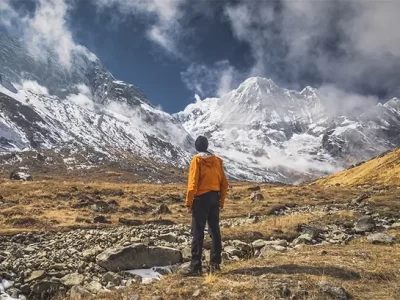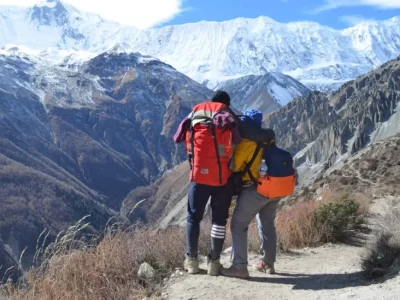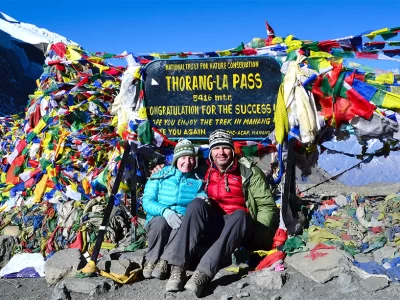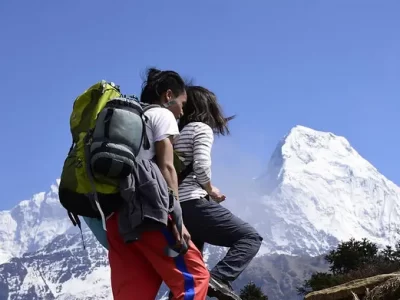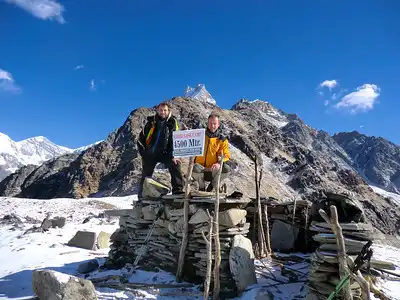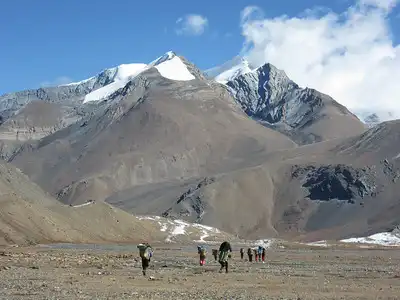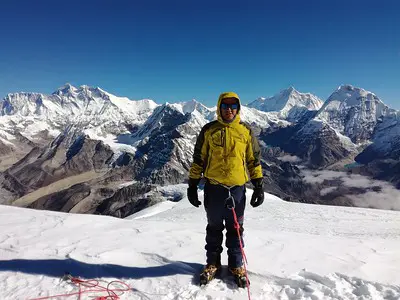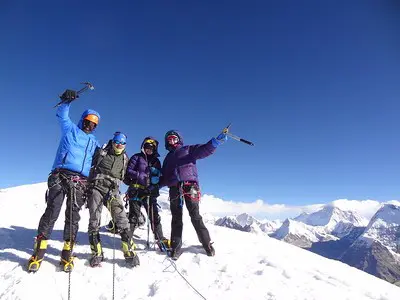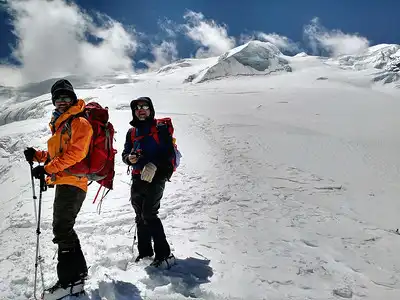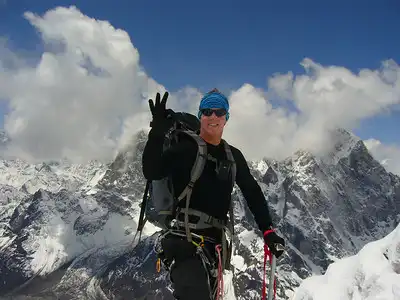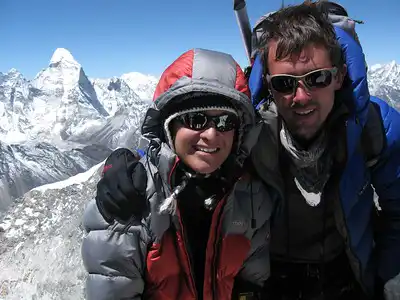The Annapurna Base Camp Trek stands out as one of Nepal’s most popular and picturesque trekking routes. The Annapurna Base Camp Trek distance spans approximately 110 kilometers, offering trekkers an immersive experience through diverse landscapes, from lush forests to high alpine terrains. This trek provides breathtaking views of the Annapurna Massif while presenting a significant physical challenge, making it crucial to understand the overall distance for proper preparation.
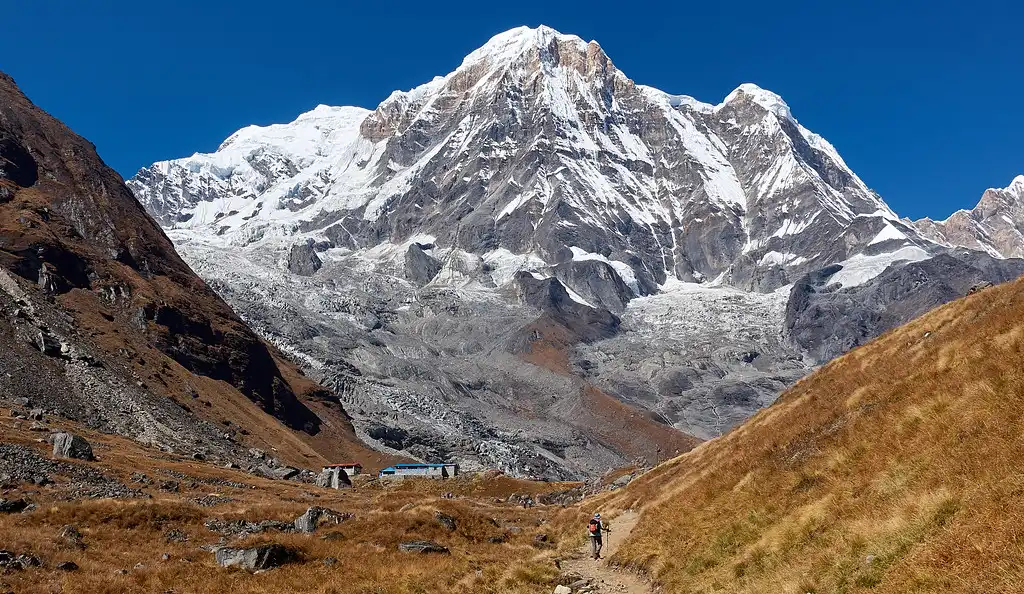
Understanding the ABC trek distance is essential for effective planning. Starting from Nayapul, the trek traverses through scenic villages like Tikhedhunga, Ghorepani, and Chhomrong, each offering its unique charm. As trekkers navigate the Annapurna sanctuary trek distance, they encounter stunning natural beauty, including terraced fields, dense rhododendron forests, and pristine rivers. A detailed ABC trekking itinerary breaks down the trip into manageable segments, ensuring trekkers can pace themselves and acclimatize properly.
Reaching the ABC base camp at 4,130 meters altitude marks the ultimate goal of this trek. The ABC trek route is well-defined, featuring clearly marked trails and regular rest stops. Following a well-planned ABC trekking itinerary, typically spanning 12-14 days, ensures a safe and enjoyable experience. Whether you’re a seasoned trekker or a beginner, understanding, and planning for the Annapurna sanctuary trek distance is key to a successful adventure.
Annapurna Base Camp Trek
Annapurna Circuit Trek
Mini Annapurna Circuit Trek
Distance Covered in Standard Itinerary
The Annapurna Base Camp Trek typically spans 14 days, covering a total distance of about 115 kilometers. This trek usually involves walking between 10 to 15 kilometers each day, traversing diverse terrains and spectacular landscapes. This standard itinerary can flexibly adjust based on your preferences or specific sites you wish to explore, ensuring the accommodation of each trekker’s needs and interests.
Here is a revised passage based on your requirements:
Day 1: Kathmandu Airport Pickup and Transfer to Hotel
Maximum Elevation: 1,345 meters
When you arrive at Tribhuvan International Airport in Kathmandu, our representative will welcome you and drive you to your hotel. This drive usually takes around 20 minutes, depending on traffic and the hotel’s location.
This seamless transfer marks the start of your trip, allowing you to settle in without any hassle. Spend the rest of your day preparing for the trek, relaxing, or exploring the vibrant Kathmandu Valley.
Day 2: Kathmandu to Pokhara
Maximum Elevation: 1,345 meters
Distance Traveled: 210 km by airplane/bus
Time by Flight: 30 minutes
Time by Road: 6-7 hours
You will travel from Kathmandu to Pokhara, a beautiful city located about 200 km away. If you choose to fly, the trip takes about 30 minutes and costs around $100. After landing at Pokhara’s domestic airport, a short drive will take you to your hotel, where you can spend the rest of the day at leisure. Known for its scenic beauty, Pokhara features Phewa Lake and the Annapurna range as its backdrop. You might explore the lakeside area, visit the International Mountain Museum, or take a boat ride on the tranquil Phewa Lake.
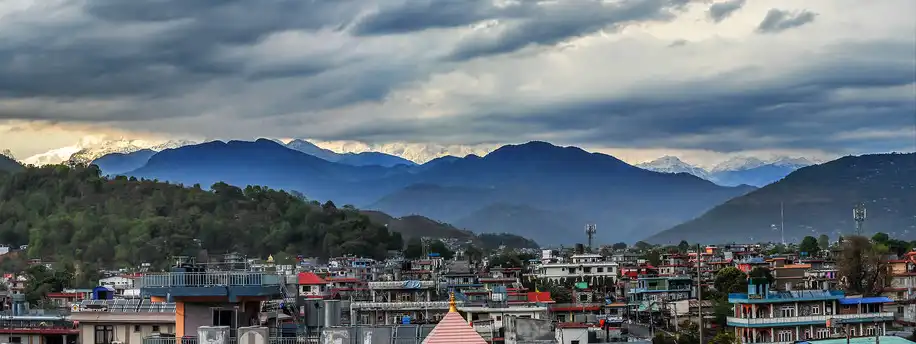
Alternatively, you can opt for a tourist bus, which takes about 6-7 hours and costs approximately $15. The bus ride provides a unique perspective on Nepal’s diverse topography and rural life, passing through bustling towns and serene villages. Upon arrival in Pokhara, you can unwind by the serene Phewa Lake, stroll along the lakeside promenade, or explore the city’s vibrant market area.
Day 3: Nayapul to Ulleri
Maximum Elevation: 1,920 meters
Distance Traveled by Bus: 40 km
Driving Time: 2 hours
Distance Traveled Walking: 15 km
Trek Duration: 5 hours
Begin your trekking adventure with a scenic 2-hour drive from Pokhara to Nayapul, covering approximately 40 km. Upon reaching Nayapul, start your hike towards Ulleri. This 15 km trek takes about 5 hours of walking, mostly uphill, with numerous stone steps and paved paths.

The trail winds through beautiful terraced fields and charming villages. Spend the night in Ulleri, a picturesque village at 1,920 meters, where local teahouses offer warm hospitality and a taste of the region’s culture.
Day 4: Ulleri to Ghorepani
Maximum Elevation: 2,860 meters
Distance Traveled Walking: 10.5 km
Trek Duration: 5 hours
Continue your trek from Ulleri towards Ghorepani. Lush rhododendron forests and scenic terraced fields mark the trek. Pass through several small villages, including Banthali and Nangeethani, each offering unique views and rest stops.

Cover approximately 10.5 km in about 5 hours. Ghorepani, at 2,860 meters, is a popular stop for trekkers, providing panoramic views of the surrounding mountains. Known for its vibrant rhododendron blooms in the spring, Ghorepani offers comfortable lodging options.
Day 5: Ghorepani to Poon Hill and Tadapani
Poon Hill Elevation: 3,210 meters
Distance to Poon Hill: 1 km
Trek Duration to Poon Hill: 1 hour
Tadapani Elevation: 2,610 meters
Distance to Tadapani: 9 km
Trek Duration to Tadapani: 6-7 hours
Start early to reach Mount Poon for a breathtaking view of the sunrise over the Himalayas. The 1 km trek takes about an hour and offers panoramic views of the Annapurna and Dhaulagiri ranges.
After enjoying the view, proceed to Ghorepani for breakfast, after which you can continue your trek to Tadapani. Climb Deurali before descending to Tadapani through dense pine and rhododendron forests. The trail stretches for 9 km and takes about 6-7 hours of walking. At an altitude of 2610 meters, Tadapani offers tranquil forest views and peaceful nights.
Day 6: Tadapani to Chomrong
Maximum Elevation: 2,170 meters
Walking Distance: 10 km
Trek Duration: 5 hours
Descend from Tadapani to the village of Chomrong. The trail initially involves a steep descent to the Kimrong Khola, followed by a gradual ascent to Chomrong, crossing the Gurung village of Chule along the way. Cover a distance of 10 km in about 5 hours.
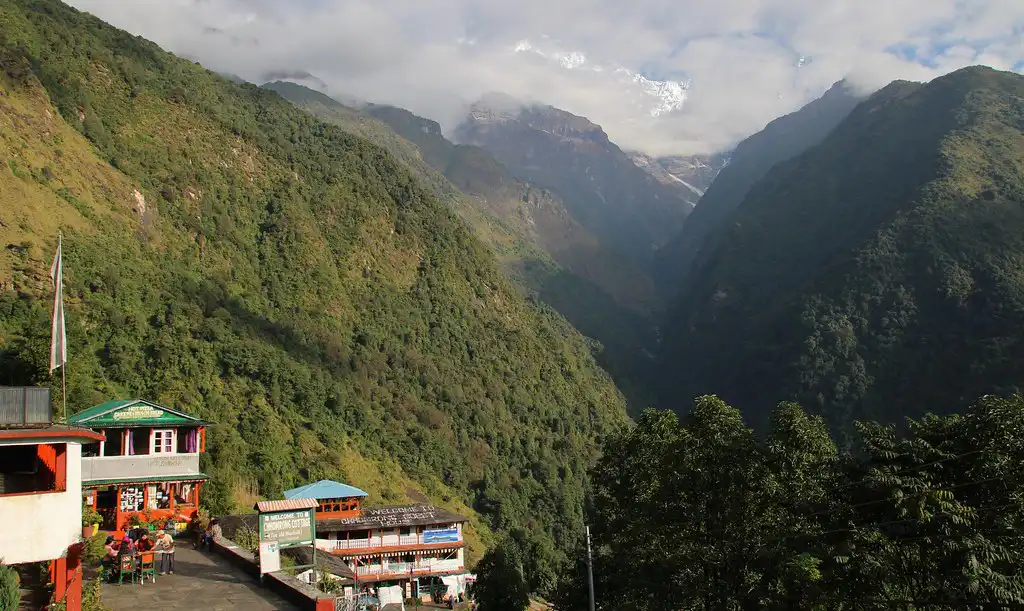
Chomrong, at 2,170 meters, is a significant village in the region, offering excellent views of Annapurna and Machhapuchhre. It is also the gateway to the upper Modi Khola Valley, leading to Annapurna Base Camp.
Day 7: Chomrong to Himalaya
Maximum Elevation: 2,300 meters
Walking Distance: 10 km
Trek Duration: 6 hours
Trek from Chomrong to the village of Himalaya. Begin with a steep drop to the Chomrong Khola, cross a suspension bridge, and ascend through dense forests. Pass through several villages, including Sinuwa and Bamboo, enjoying scenic views and challenging terrain.
Cover 10 km in about 6 hours. Himalaya, situated at 2,300 meters, is your resting point for the night, offering a peaceful environment and basic amenities to rest and recharge.
Day 8: Himalaya to Annapurna Base Camp
Maximum Elevation: 4,130 meters
Walking Distance: 13 km
Trek Duration:7 hours
This day is the highlight of your trek as you reach Annapurna Base Camp. Start the trek from the Himalayas, and the trail ascends through dense forests and avalanche-prone areas, reaching Machhapuchhre Base Camp (MBC).
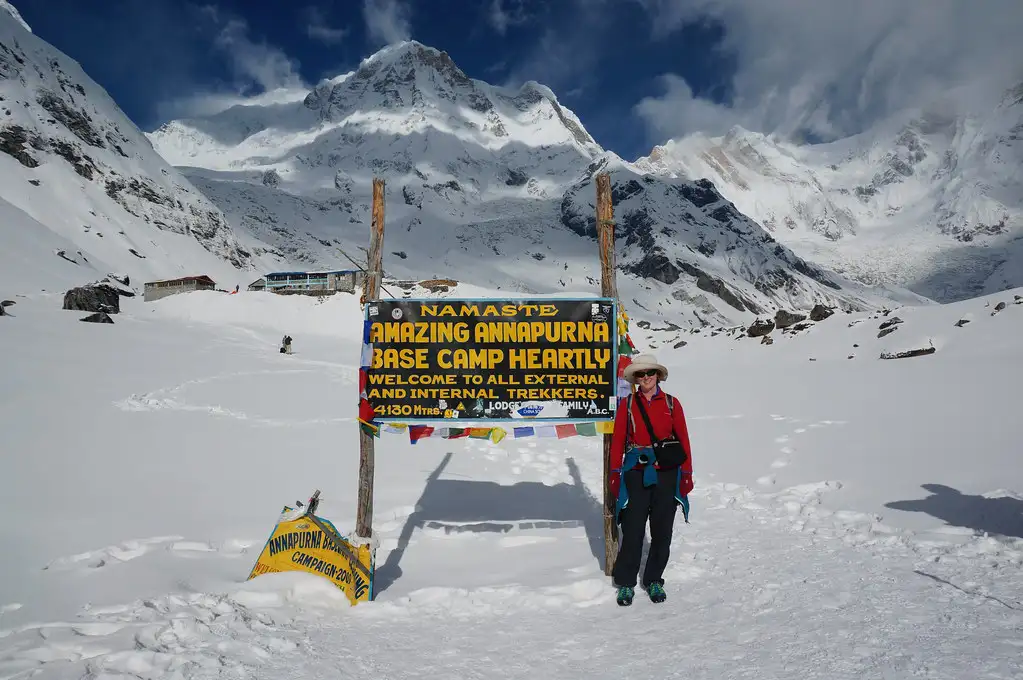
Continue from MBC to reach Annapurna Base Camp (ABC), situated at an elevation of 4,130 meters. The 13 km trek, which takes about 7 hours, offers spectacular views of Annapurna I, Annapurna South, Hiunchuli, and Machhapuchhre. The panoramic vistas from ABC make the effort worthwhile. Here, you can marvel at the majestic Annapurna range and soak in the serene ambiance of the base camp.
Day 9: Annapurna Base Camp to Bamboo
Maximum Elevation: 3,700 meters
Walking Distance: 16 km
Trek Duration:7 hours
Begin your descent from Annapurna Base Camp, retracing your steps to Bamboo. Follow the trail along the Modi Khola, passing through rhododendron forests. This segment covers 16 km and takes about 7 hours.
The descent is relatively easier and faster, allowing you to enjoy the changing landscapes as you lose elevation. Bamboo, located at 3,700 meters, provides a comfortable resting place with basic amenities, offering a peaceful night’s rest after a long day of trekking.
Day 10: Bamboo to Jhinu Hot Spring
Maximum Elevation: 2,345 meters
Walking Distance: 12 km
Trek Duration:6 hours
Trek from Bamboo to Jhinu Hot Spring, covering 12 km in about 6 hours. The trail involves a mix of steep descents and ascents, challenging your stamina and balance.
Upon reaching Jhinu, reward yourself with a relaxing dip in the natural hot springs, soothing your tired muscles. Spend the night at one of the local teahouses, enjoying their hospitality and comfort.
Day 11: Jhinu Hot Spring to Nayapul and Drive to Pokhara
Walking Distance: 13 km
Trek Duration: 5 hours
On the final day of trekking, hike back to Nayapul from Jhinu Hot Spring. The trek covers 13 km and takes about 5 hours, providing a gentle end to your trekking adventure. From Nayapul, a jeep or bus will transport you back to your hotel in Pokhara, a 2-hour drive away. Once in Pokhara, you can relax and reflect on the incredible trek you have completed.
Day 12: Drive/Fly Back to Kathmandu
Distance Traveled: 210 km
Time by Flight: 30 minutes
Time by Road: 6-7 hours
Travel back to Kathmandu either by flight or bus. The flight, taking around 30 minutes, offers a quick and scenic return to the capital. Alternatively, the bus ride takes 6-7 hours, giving you more time to enjoy Nepal’s landscapes. If you choose to fly, spend part of the day exploring Pokhara before your departure.
Day 13: Explore Kathmandu
Spend the day exploring Kathmandu and visiting historical and cultural sites such as Swayambhunath (Monkey Temple), Pashupatinath Temple, and Durbar Square.
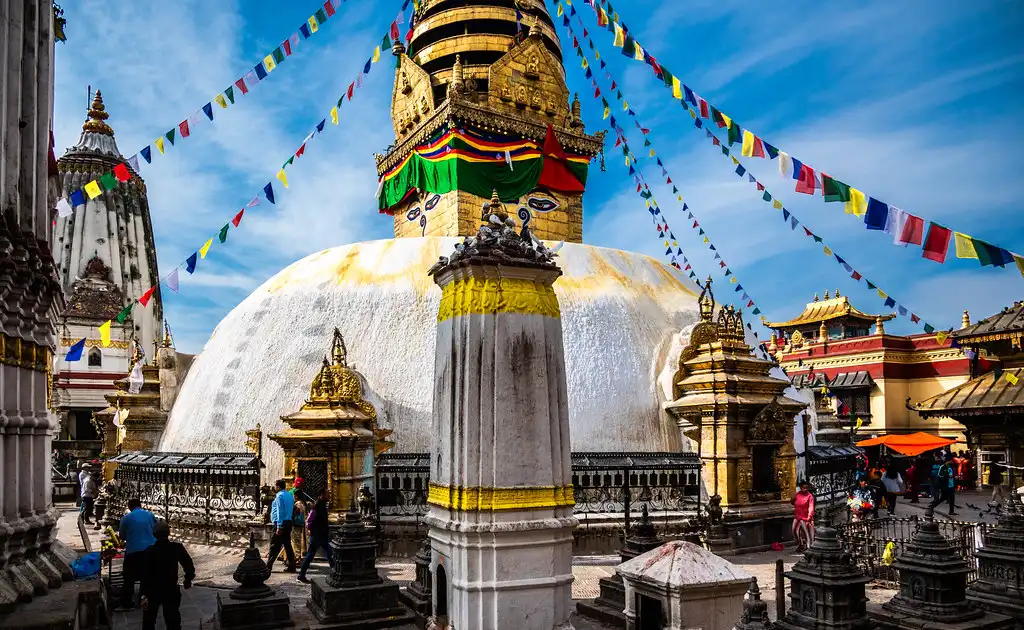
These landmarks offer a deep dive into Nepal’s rich history and culture. Enjoy shopping in the bustling Thamel district or relax before your departure. This day allows you to unwind and take in the sights and sounds of Kathmandu at your own pace.
Day 14: Departure
Conclude your trip with a transfer to Tribhuvan International Airport for your flight home. Reflect on the incredible experiences and memories made during your Annapurna Base Camp Trek. Appreciate the stunning landscapes, challenging trek, and cultural encounters that made your adventure unforgettable.
Ghorepani Poon Hill Trek
Mardi Himal Trek
Dhaulagiri Trek
ABC Trekking Route
The Annapurna Base Camp trekking route stands out as one of Nepal’s most scenic and varied trekking paths. Starting from Nayapul, the trail leads through picturesque villages such as Tikhedhunga, Ghorepani, Tadapani, and Chomrong before reaching Machhapuchhre Base Camp (MBC) and finally Annapurna Base Camp (ABC).
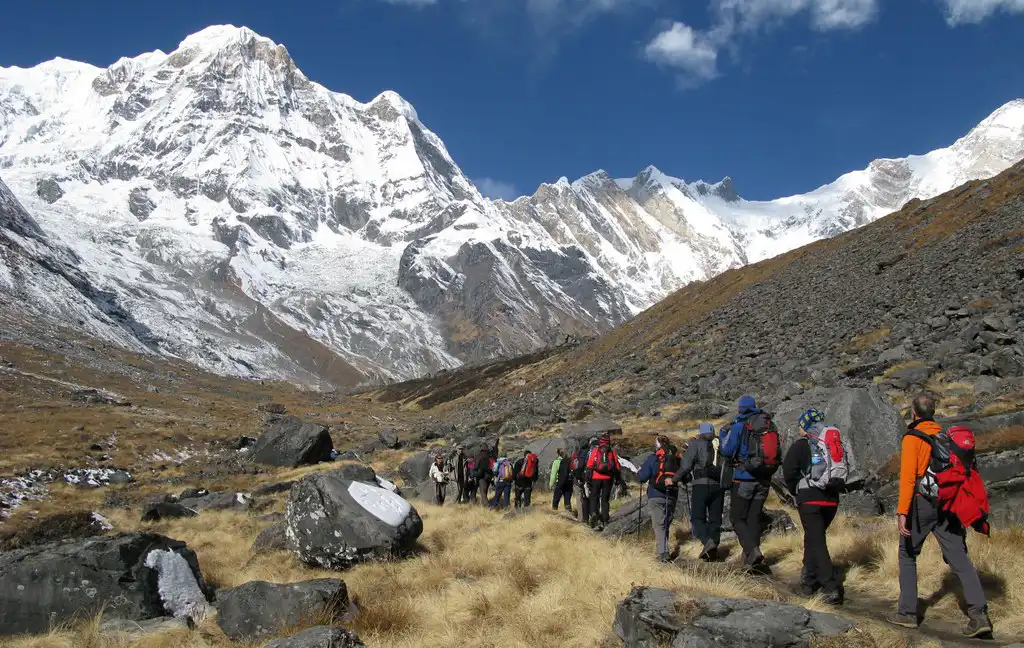
The trek takes you through terraced farmlands, dense rhododendron forests, and alpine landscapes. Key points on the route, like Poon Hill for stunning sunrise views, the serene village of Tadapani, and the soothing hot springs at Jhinu Danda, provide unique experiences and necessary rest stops.
The ABC trekking route features well-spaced milestones, making it easier for trekkers to manage the distances. For instance, the distance from Nayapul to Tikhedhunga is about 10 km, from Tikhedhunga to Ghorepani is roughly 13 km, and from Ghorepani to Tadapani is about 11 km.
These segments, though seemingly short, present challenges due to the varied terrain and elevation changes. From Tadapani to Chomrong, the trail covers approximately 10 km, while the distance from Chomrong to the Himalayas is also around 10 km. The final leg from Himalaya to ABC spans about 13 km, culminating in a total trekking distance of approximately 115 km.
Acclimatization days are essential for a safe and enjoyable trek to ABC. These days allow trekkers to adjust to the increasing altitude, significantly reducing the risk of altitude sickness, a common concern in high-altitude treks.
Spending an extra day in Ghorepani before moving on to Tadapani or taking an additional rest day in Chomrong can greatly enhance acclimatization. This careful planning not only improves the overall trekking experience but also ensures that trekkers can complete the trek without health issues, fully enjoying the breathtaking views and cultural encounters along the Annapurna Base Camp Trek distance.
How long does it take to complete the Annapurna Base Camp trek?
The Annapurna Base Camp trek typically takes about 7 to 12 days to complete, depending on the specific route and pace of the trekking group. This timeframe allows trekkers to enjoy the scenery and manage the physical demands of hiking in high-altitude areas without rushing through the experience.
Starting from Nayapul, trekkers gradually ascend through various landscapes, including lush forests and rugged mountain terrain, eventually reaching the base camp. The trip includes essential acclimatization days, particularly in places like Ghorepani and Chomrong, to help minimize the risk of altitude sickness and ensure that trekkers can adjust to the higher elevations comfortably.
The entire route covers a distance of approximately 115 kilometers round trip, making it a moderately challenging trek that offers spectacular views of the Annapurna range, diverse flora and fauna, and rich cultural interactions with the local communities. Each day involves 4-6 hours of walking, which is manageable for most people with regular fitness levels.
Practical Tips for Managing the Trek Distance
Preparing for the ABC Trek Distance
To prepare for the Annapurna Base Camp (ABC) trek distance:
- Focus on both physical and logistical planning.
- Research the trek thoroughly to understand the daily distances, elevations, and terrain types.
- Mentally prepare by acknowledging that you will walk 10 to 15 kilometers each day over various terrains.
- Practice efficient packing to ensure you carry essential items without overloading yourself.
Recommended Fitness Level and Training Tips
Maintaining a good fitness level is essential for managing the ABC trek distance effectively. Incorporate strength training exercises focusing on your legs and core to handle steep climbs and descents better.
Hiking on local trails with a loaded backpack will simulate trekking conditions and help your body adapt. Start your fitness regimen three to six months before your trek, gradually increasing the intensity and duration of your workouts.
Packing Essentials to Manage Long Distances
Efficient packing is crucial for managing long distances on the ABC trek. Pack layered clothing for varying temperatures, a sturdy backpack, a cold-weather-rated sleeping bag, and a first aid kit.
Bring high-energy snacks, water purification tablets, and a reliable water bottle. A detailed map, a compass or GPS device, and a headlamp with extra batteries are essential for navigation and safety. Keep your backpack’s weight manageable, ideally not exceeding 10-12 kilograms, by focusing on multipurpose items.
Importance of Proper Footwear and Gear
Proper footwear and gear are vital for a successful trek. Invest in high-quality, well-fitted trekking boots with good ankle support and sturdy soles to handle rugged terrain. Break in your boots before the trek to avoid blisters and discomfort.
Trekking poles provide additional stability and reduce strain on your knees during steep descents. Additionally, a well-fitted backpack with padded shoulder straps and a waist belt will evenly distribute weight, making long distances more comfortable.
Difficulty Level of Annapurna Base Camp Trek
Generally, people consider the Annapurna Base Camp (ABC) trek as moderately difficult. This rating takes into account various factors such as altitude, walk distance, and terrain. At Annapurna Base Camp, the trek reaches a maximum altitude of 4,130 meters, posing challenges related to altitude sickness.
However, the trails are well maintained and rise gradually, allowing pedestrians flexibility in development. The total distance of the ABC trek is approximately 115 kilometers, typically covered throughout 7 to 12 days. Each day involves walking for about 4 to 6 hours, with some days requiring longer treks through steep and rocky terrain.
The need for physical stamina combined with the mental preparedness to handle varied weather conditions adds to the trek’s difficulty level. Despite these challenges, the breathtaking scenery, from rhododendron forests to mountain vistas, makes the effort worthwhile.
Annapurna Base Camp Altitude
The Annapurna Base Camp’s altitude stands at 4,130 meters (13,549 feet) above sea level, posing a significant challenge due to the reduced oxygen levels at such heights. Trekkers must ascend gradually and incorporate acclimatization days into their schedule to adapt to the thin air and minimize health risks.

The base camp, nestled in a natural amphitheater and surrounded by towering peaks like Annapurna I, Annapurna South, Hiunchuli, and Machhapuchhre, offers breathtaking panoramic views. Reaching the Annapurna Base Camp altitude requires careful planning and preparation. The trek involves navigating steep climbs and descents through diverse terrain, including lush forests, terraced fields, and alpine landscapes.
The gradual increase in altitude helps trekkers acclimatize properly, making the trek more manageable. Despite the physical demands, standing at Annapurna Base Camp, encircled by some of the world’s highest mountains, is a rewarding experience. To reach this elevation safely, trekkers need to focus on proper acclimatization, hydration, and maintaining a steady pace.
Best Season for the Annapurna Base Camp Trek
Spring (March to May)
Spring is an ideal time to go on the Annapurna Base Camp trek. During this season, the weather is generally mild, and the skies are clear, providing spectacular views of the surrounding peaks. Temperatures at lower elevations range from 10°C to 20°C, making it comfortable for trekking.
As you ascend, temperatures can drop, especially at night, but they remain manageable with the right gear. One of the highlights of trekking in spring is the blooming rhododendron forests, which add vibrant colors to the landscape and enhance the overall experience. Although the trails are relatively busy, the beauty and moderate weather make it worthwhile.
Autumn (September to November)
Autumn is another excellent season for the Annapurna Base Camp trek. Post-monsoon, the skies clear up, offering crisp, clear views and stunning mountain vistas. Daytime temperatures are pleasant, ranging from 10°C to 15°C, while nights can get quite cold at higher altitudes, sometimes dropping below freezing.
The trails are dry and safe during this season, making it an ideal time for trekking. Autumn also coincides with several major Nepali festivals, providing a rich cultural experience as you pass through various villages along the route. However, it is also the peak trekking season, so expect more crowded trails and teahouses.
Winter (December to February)
Winter is a less popular season for the Annapurna Base Camp trek due to cold temperatures and potential snowfall at higher elevations. Daytime temperatures can range from 5°C to 10°C, while nighttime temperatures can drop well below freezing, especially at the base camp.
Despite the cold, winter offers unique advantages such as fewer crowds and pristine, snow-covered landscapes. If you are well-prepared with appropriate cold-weather gear and have experience trekking in snowy conditions, winter can be a rewarding time to explore the Annapurna region in solitude. The clear winter skies also provide excellent visibility of the mountains.
Monsoon (June to August)
Monsoon is the least favorable season for the Annapurna Base Camp trek due to heavy rainfall, slippery trails, and the increased risk of landslides and leeches. The trails become muddy and challenging, and clouds and rain often obscure views.
However, the lower regions of the Annapurna Conservation Area become lush and green during this time, and the waterfalls are at their most powerful. If you choose to trek during the monsoon, be prepared for wet conditions and carry appropriate rain gear. It is also crucial to check the weather forecast regularly and stay informed about trail conditions.
Commonly Asked Questions About the Annapurna Base Camp Trek Distance
1. How Long is the Annapurna Base Camp Trek Distance?
The Annapurna Base Camp trek spans about 115 kilometers (71 miles) round trip. Typically, trekkers complete this distance over 7 to 12 days, depending on their pace and chosen itinerary.
The trek begins at Nayapul and travels to Annapurna Base Camp and back, passing through various villages, forests, and alpine landscapes. Each day, trekkers cover between 10 and 15 kilometers (6 to 9 miles), making the trek moderately challenging in terms of distance and elevation gain.
2. What is the Daily Walking Distance on the ABC Trek?
Daily walking distances on the ABC trek vary but generally fall between 10 to 15 kilometers (6 to 9 miles). For instance, the first day’s trek from Nayapul to Tikhedhunga is around 10 kilometers. The next stretch from Tikhedhunga to Ghorepani covers approximately 13 kilometers.
From Ghorepani to Tadapani, the distance is about 11 kilometers, and the route from Chomrong to Himalaya is around 10 kilometers. The longest segment usually goes from the Himalayas to Annapurna Base Camp, which is roughly 13 kilometers. Despite appearing short, the varied terrain and elevation changes make these distances challenging.
3. How Does Altitude Affect the ABC Trek Distance?
Altitude greatly impacts the ABC trek distance, as trekkers ascend from around 1,070 meters (3,510 feet) at Nayapul to 4,130 meters (13,549 feet) at Annapurna Base Camp. The higher altitude results in thinner air and less oxygen, increasing the risk of altitude sickness.
To mitigate this, trekkers should ascend gradually and incorporate acclimatization days into their itinerary. This gradual ascent allows the body to adjust to the changing altitude, reducing the risk of altitude sickness and making the trek more enjoyable and manageable.
4. What are the key milestones of ABC Trek?
Key milestones on the ABC trek include several picturesque and culturally rich villages. The trip begins at Nayapul and leads to Tikhedhunga, then to Ghorepani, known for the stunning Poon Hill sunrise view. From Ghorepani, trekkers proceed to Tadapani, Chomrong, and Dovan.
The trek continues to Deurali, then to Machhapuchhre Base Camp (MBC), before finally reaching Annapurna Base Camp (ABC). Each milestone offers unique experiences, such as breathtaking views, cultural interactions, and diverse terrain, making the trek a rich and varied adventure.
5. How Can Trekkers Prepare for the ABC Trek Distance?
To prepare for the ABC trek distance, trekkers should focus on physical training, proper gear, and acclimatization. Regular cardiovascular and strength training exercises, especially those targeting leg and core muscles, are essential and should begin three to six months before the trek. Simulating trekking conditions by hiking with a loaded backpack on local trails can help condition the body.
Essential gear includes high-quality trekking boots, moisture-wicking socks, layered clothing, a sturdy backpack, a cold-weather sleeping bag, and a first aid kit. Proper acclimatization is crucial, so incorporating rest days into the itinerary to adjust to the altitude will ensure a safer and more enjoyable trek.
Conclusion
The Annapurna Base Camp trek distance of about 115 kilometers presents a rewarding challenge for trekkers. This trek tests both physical and mental endurance while offering stunning views of the Annapurna range and rich cultural experiences.
Each day involves walking 10 to 15 kilometers through varied landscapes, from lush forests to rugged mountain trails. Proper preparation, including physical training and careful packing, is essential to manage the trek and fully enjoy the breathtaking scenery successfully.

